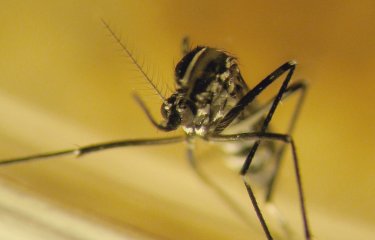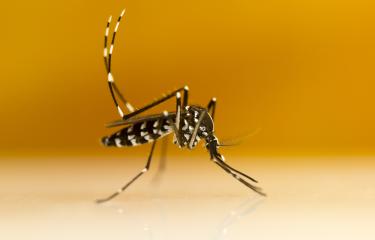On April 26, the French Ministry of Health updated its map showing distribution of the tiger mosquito in France. In total, 51 French départements are on "red alert", i.e. nine more than in 2018. Aedes albopictus, or the tiger mosquito, is the vector of diseases such as dengue, chikungunya and Zika, and has been present in France since 2004.
The tiger mosquito (see What is the "tiger mosquito" (Aedes albopictus)?) is continuing to colonize France, with 66 départements now affected, as reported by the French General Directorate of Health in April. 51 départements are on red alert, 15 are on orange alert and 30 are on yellow alert (see the maps below). There are now no départements under simple health surveillance or on green alert. This year, the particularly mild winter and early warm spells triggered the start of the tiger mosquito season long before the launch of the vector control plan, which officially starts on May 1.
The same observation was made in 2018 after a "big year for mosquitoes" and they were still present in the lead up to Christmas. Surveillance was therefore stepped up to slow their progression.
The tiger mosquito, which can be identified by its black and white stripes, mainly lives in urban areas. Because of its anthropophilic nature, it is practically impossible to get rid of once it has arrived in a town or region. The French départements where the tiger mosquito is present and active, i.e. settled and breeding, are classified as level 1 in the French national plan to prevent the spread of chikungunya, dengue and Zika. To date, no level 1 département has returned to level 0a or 0b, as indicated in the maps below. To protect yourself from mosquito bites, the World Health Organization recommends wearing loose, light-colored clothing and avoiding stagnant water, where larvae can multiply.
Situation late 2018 (in French)

Progression from 2004 to 2018 (in French)

Source : French Ministry of Health









